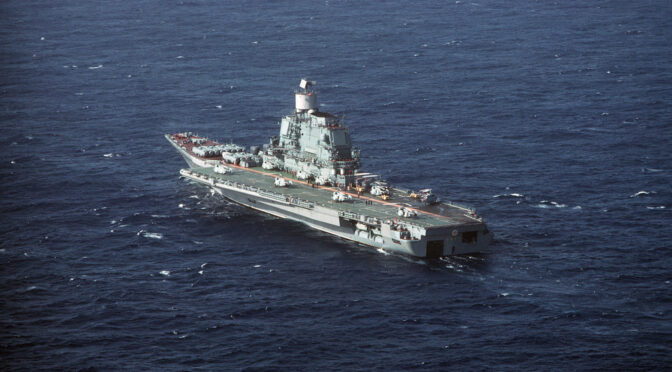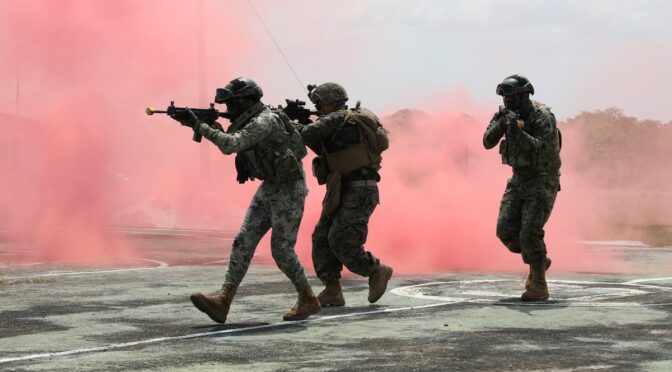The following originally appeared in the summer 1985 edition of the Naval War College Review and is republished with permission. Read it in its original form here.
By Floyd D. Kennedy Jr
“Air Defense of Naval Forces: a set of organizational measures and combat operations to repel the attack of an airborne enemy and protect groupings of naval forces at sea and in bases, and also to protect shore installations against air strikes. Naval air defense helps gain and keep air supremacy in certain regions of a theater of operations. Air defense is used in all types of combat and operations, during a sea crossing (of formations or independent ships), and in the daily combat activity of naval forces…” —Rear Admiral S.P. Teglev, Chief of Naval Air Defense, Soviet Military Encyclopedia, 1978.
The Soviet Navy is constantly changing, evolving from a coastal defense force to a blue water fleet able to show the red flag in the far reaches of the globe. This evolution is evident in Soviet shipbuilding programs and peacetime operations. But nowhere is it more evident than in Soviet naval literature. This literature, more than any other indicator, reflects the attitudes and concerns of high-ranking Soviet naval officers. In the 1980s one of the prime concerns of the Soviet Navy’s leadership appears to be the air defense (protivovozdushnaya oborona, or PVO) of naval forces. This phenomenon is a relatively recent one in the literature. The change portends a new Soviet intention to operate naval forces outside the protective umbrella of shore-based air defense forces and, perhaps, to use those forces more aggressively in areas distant from Russian shores outside the context of a NATO/Warsaw Pact war.
Air defense issues of particular importance to Soviet authors appear to center on the threat posed by antiship missiles (ASMs) and the best method of countering that threat. Among the leading ASM defensive measures discussed are electronic warfare (EW) systems, missiles, guns, directed energy weapons, and, the most controversial of all, carrier-based airborne early warning (AEW) aircraft and long-range interceptors. These Soviet views on fleet air defense require close examination if the West is to gain insight into the Soviet Navy of the late 1990s.
Early Views on Fleet PVO
One indicator of the attention a particular issue is receiving, or has recently received, at the higher levels of the Soviet naval command structure is the frequency with which it is discussed in the military literature. In the 1960s PVO at sea was a prime subject in only four articles from the available literature, and only two of those articles were devoted exclusively to fleet air defense.1 All four articles generally agreed that air defense could be broken down into two elements: combat against missiles and combat against missile launch platforms. Action against missiles was the responsibility of the antiaircraft guns, missiles, and electronic countermeasures on board surface ships. Action against launch platforms appeared to be the responsibility of the land-based interceptor aircraft of PVO Strany, the Soviets’ air defense force. The Soviet authors considered this division necessary because missiles could be fired from beyond the range of shipboard defenses. An unspoken but obvious corollary to this argument was that the Soviets did not then plan to employ their surface warships beyond the protective umbrella of land-based interceptors in wartime.
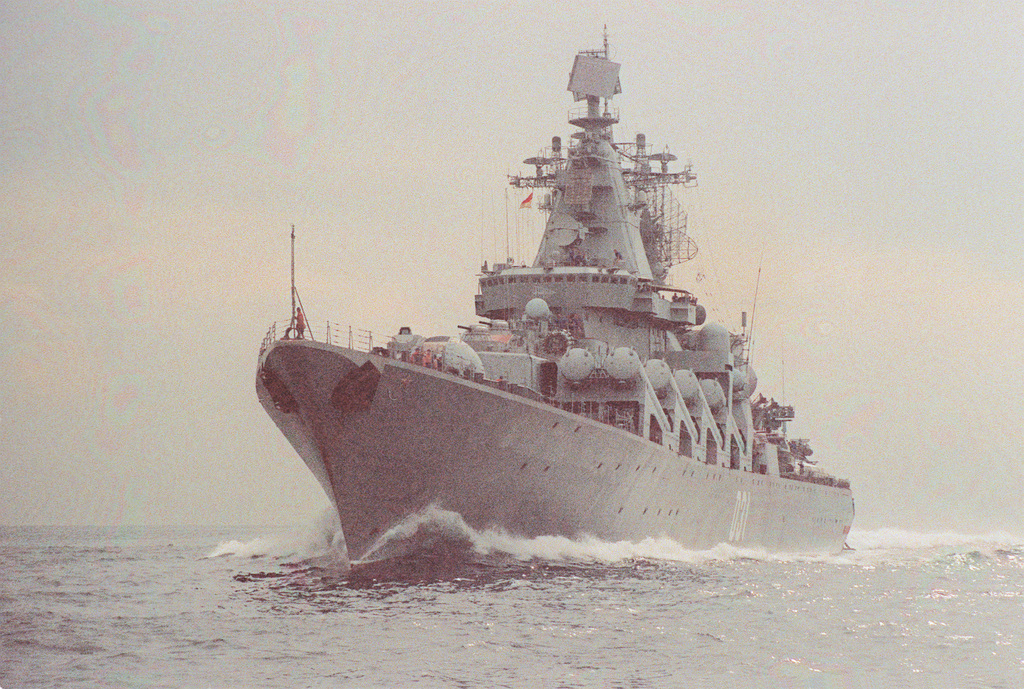
The literature of the early 1970s contained virtually no mention of fleet air defense. In an otherwise extremely comprehensive article entitled, “Some Trends in the Development of Naval Tactics,” Captain First Rank N. V’yunenko did not once mention PVO at sea, although he touched on almost every other naval subject imaginable.2 Because V’yunenko enjoyed then (1975) – as he does now – a close relationship with the Soviet Navy’s highest decision makers, his omission of PVO from his otherwise comprehensive article appears significant, reflecting either a lack of high-level concern about the subject or, more likely, a division of official opinion on the matter.
The ASM Threat
In the early 1970s the Soviet press began to discuss a significant new airborne threat, the ASM. The first article on this subject in their navy’s professional journal, Morskoy sbornik, was entitled “The First Combat Use of Ship-to-Ship Missiles and Their Development.” The author, a civilian named Shaskol’skiy, discussed the sinking of the Israeli destroyer Eilat in October 1967 and the Western reaction to that event in the form of ASM development and countermeasures. The magazine gave no prominence to the article – it was buried in the back pages, the author was a virtual unknown, and the events he was discussing were almost three years old.3 Yet the difficulties Shaskol’skiy described as bedeviling Western engineers in the development of ASM defense (ASMD) systems presaged similar Soviet problems.
In the mid-1970s Morskoy sbornik followed Western ASM developments fairly closely and reported their developmental milestones in the magazine’s section on “Foreign Navies: Reports and Facts,” a compilation of brief, newsworthy vignettes on foreign naval developments. The first complete article devoted exclusively to a single ASM appeared in the July 1977 Morskoy sbornik and inaugurated a spate of writing on the ASM and the problems of defending against it that has continued to the present day. This initial article was written by Captain First Rank B. Rodionov and Engineer N. Novichkov, who have become prolific writers on the problems of fleet air defense. Entitled simply, “The Tomahawk Cruise Missile,” it contained a basic description of the land attack and anti-ship variants of the missile, along with a mild polemic on their arms control implications.4
The following year Rodionov and Novichkov published a more analytical article entitled, “Is the Missile Defense Problem Solvable?” Crediting ”foreign military specialists” with most of the analysis, the two authors recommended recruiting helicopters into the ASMD role to improve a ship’s detection range against missiles and their launch platforms. In addition, the helicopters were to be equipped with electronic countermeasures (ECM) to foil the missiles’ seekers and air-to-air missiles to knock down the ASMs. The authors suggested other improvements, including the automation of information collection, processing, and weapons control on board ship to compensate for the short warning time afforded by sea-skimming anti-ship missiles. With regard to the question posed by the title of their article the authors concluded that there “is no unequivocal answer . . . at present,” adding “Many foreign specialists are far from optimistic when evaluating the capabilities of combating anti-ship cruise missiles.” The two Soviet writers reached this conclusion despite the fact that they had just finished describing the unqualified success of Israeli ASMD against Soviet-made anti-ship missiles in the 1973 Yom Kippur war.5 It would appear that their pessimism over ASMD capabilities was their own and not of Western origin.
Kuz’min also had described the 1973 Israeli successes in the previous edition of Morskoy sbornik, as out of 50 ASMs fired by the Egyptians not a single one hit an Israeli target. Kuz’min had a more important point to make, however,
“Reconnaissance support of the combat employment of anti-ship cruise missiles is linked directly with reconnaissance directed at combating cruise missiles. This fact has caused foreign military specialists to express grave concern about the difficulties of detecting missiles. . . . It might turn out that the warning about incoming missiles will be their detection on radar screens, which could already be too late for the employment of air defense missiles for their destruction.”
Like Rodionov and Novichkov, Kuz’min recommended, through his “foreign military specialist” surrogates, the employment of helicopters for detecting incoming ASMs and the automation of intelligence processing and distribution.6
The sixth volume of the authoritative Soviet military encyclopedia Sovetskaya Voyennaya Entsiklopediya was published at approximately the same time as the above two articles. This volume contained an entry by Rear Admiral S. P. Teglev, Chief of Naval Air Defense, on “Air Defense of Naval Forces,” the first two sentences of which are quoted at the head of this article. Teglev continued his entry by describing the forces committed to naval air defense:
“This [defense] is accomplished with the antiaircraft weapons of ships and naval bases and naval fighter aviation in coordination with the National Air Defense Forces and the ground forces. Outside the reach of the weapons of the National Air Defense and the air defense forces of the ground forces, only a ship’s own antiaircraft missile complexes, small and medium-caliber antiaircraft guns, ship-based fighter aircraft, and equipment for naval reconnaissance and electronic warfare are used.”7
Later, Teglev specifically described how capitalist countries conducted naval air defense, implying that the above quotation described the Soviet method of PVO. This point is curious, because the entry was sent to press almost five years before the only Soviet ship-based fighter, the vertical takeoff and landing (VTOL) Forger, demonstrated an antiair warfare capability. This encyclopedia entry probably reflected Soviet naval planning, or even desire, rather than capabilities.
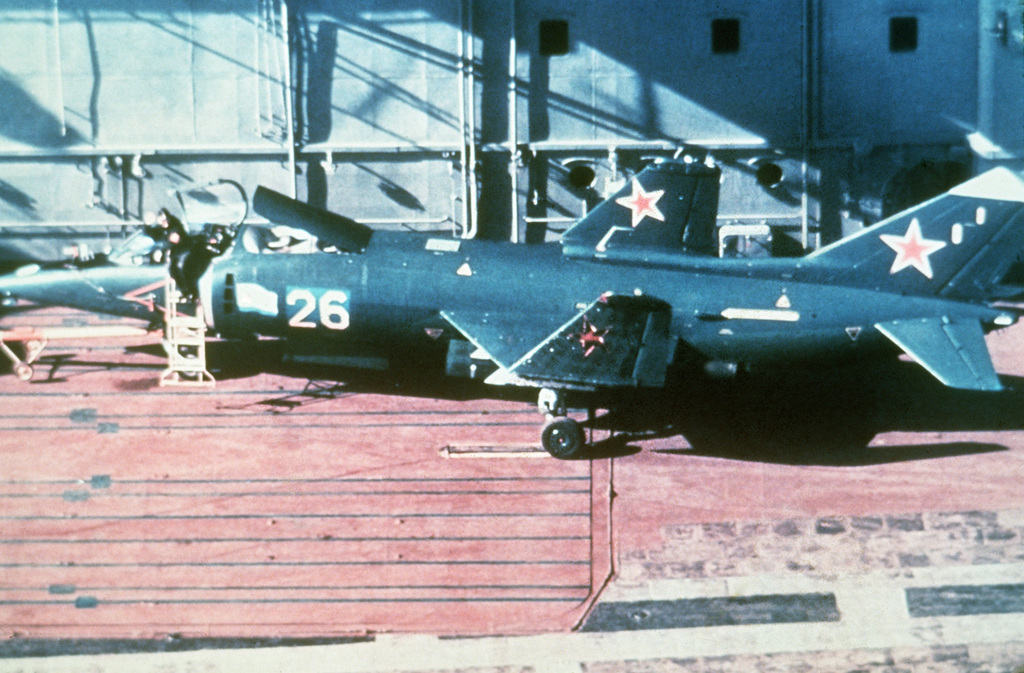
ASM Defense
The Soviets published no major Soviet articles in 1979 on either fleet air defense or ASMs, although the ”Foreign Navies: Reports and Facts” section of Morskoy sbomik continued reporting on Western programs in both these fields. But the following year more than compensated for the lapse in 1979 with five major articles, four in Morskoy sbornik and one in Voyenno-storicheskiy zhurnal.
In February 1980 Captain First Rank Vasil’yev examined PVO at sea from the historical perspective. Vasil’yev asserted that in World War II fighter aircraft were “the most effective force in repelling an air attack,” but by the 1960s surface-to-air missiles had assumed “the first place among other air defense weapons.” At present and in the near future “aircraft and. . . winged missiles, which fly at very low altitudes, will effectively overcome the air defenses of ship formations.” The way to counter these systems, according to Vasil’yev, was with a deeply echeloned defense in four zones: “self-defense (up to 20 km), close-in (20-70 km), medium-range (70-180 km), and distant (more than 180 km).8 Probably not coincidentally, new Soviet SAM systems neatly fall into three of these zones: the SAM carried by the DDG Udaloy for self-defense, the SA-N-7 for close-in, and the SA-N-6 for medium range.9 All that remains is the distant zone, for which Vasil’yev implied – but never directly stated – ship-based fighter aviation would be the most suitable.
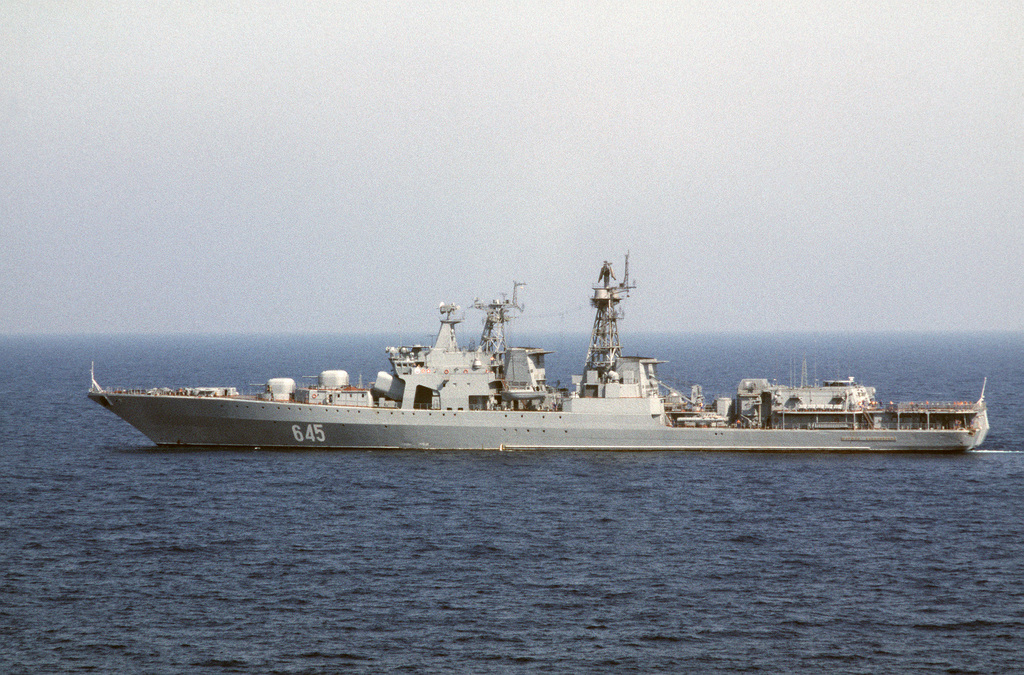
In the April 1980 Morskoy sbomik Captain First Rank-Engineer V. Grisenko published a detailed description of the American AN/ALQ-32 ECM system that was designed, according to the author, after a careful analysis of more than 50 variants of naval combat. The system ”embodies completely the basic views of the US Navy’s leadership with respect to the role of ECM equipment in the defense of surface ships against missiles, especially anti-ship missiles with radar homing systems.”10
In a general discussion of air supremacy in the July 1980 issue of the journal of military history, Voyenno-istoricheskiy zhumal, Major General of Aviation I. Tomokhovich included two paragraphs on air supremacy in sea and ocean theaters of operations, He made two points, the first being that carrier-based aircraft had played the chief role in World War II naval battles. This first point was tempered by his second,
“The great importance of carriers as floating airfields and, on the other hand, their vulnerability from the air, forced the command elements of the warring sides continuously to reinforce the air defense of carrier forces with fighter aircraft and air defense weapons. This fact is why the operations of carrier forces usually were accompanied by fierce air battles and engagements.”11
Thus, according to Tomokhovich, although carrier aircraft were essential to victory at sea in World War II, the ships on which they were based were extremely vulnerable to enemy action and needed enormous resources devoted to their protection. By inference the same logic could be applied to proposed Soviet carriers.

Rodionov and Novichkov appeared again in the August 1980 issue of Morskoy sbornik with a treatise on the employment of airships (dirigibles) as airborne early warning (AEW) platforms for naval formations. Ascribing support for such a concept to “US Navy specialists,” the authors presented a convincing argument for developing airships to provide non-carrier naval groupings’ early detection of anti-ship missiles and their launch platforms. They cited the tremendous endurance of airships, their ability to handle all the functions of E-2C Hawkeye aircraft, including control of interceptors, and their ability to provide over-the-horizon targeting support to ship-based ASMs. Again paraphrasing their unspecified American source, the authors provided the following scenario. ”Dirigibles perform surveillance and issue target designations; surface combatants serve as platforms for helicopters and as means of support, including fuel for the dirigibles; and coastal patrol aircraft and ship-based helicopters deliver attacks against targets detected by the dirigibles and lay sonobuoy fields over a large area.”12 This scenario seems more attuned to Soviet naval equipment and operational concepts than to American ones.
The final 1980 article on the subject of anti-ship missiles and anti-ship missile defense seemed to be an attempt to put the ASM threat in perspective and allay what may have been growing fears about those missiles within the Soviet Navy. Subtitled “‘Anti-ship Missiles: Strengths and Weaknesses,” the article by Captain First Rank A. Strokin described the warheads, performance, flight profiles, and platforms of Western ASMs. It then outlined their weaknesses, concentrating on their subsonic speed, vulnerability to shipboard fire, inadequate target selectivity, and susceptibility to ECM. He concluded with steps suggested by “NATO naval specialists” for improving ASMD. “Increase the range of detection of the missiles; reduce time required to convert all means of fire to full combat readiness; improve the performance characteristics of means of observation and destruction to the point of complete automation of all processes from detection to opening fire.13 Automation seems to be a key concept espoused by many Soviet authors for solving the ASMD problem.
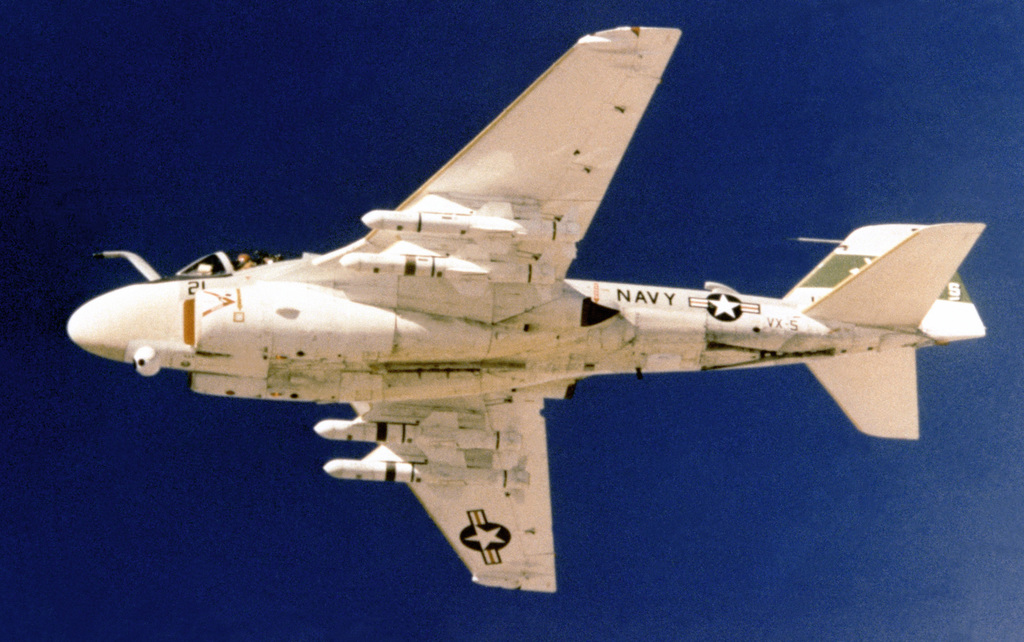
In 1981 Soviet authors produced one article in Zarubezhnoye voyennoye obozreniye (Poreign Military Review) on NATO ASMD capabilities,14 one in Morskoy sbornik on the operation of attack aircraft and fighters from carrier decks,15 and another in the same periodical on the general theory of the navy. This last is significant for the subject of this paper because of one comment by its author, Rear Admiral G. Kostev, “The winning of sea supremacy practically is not conceived without the winning of air superiority.”16 Although obvious to most Western naval analysts, this concept of sea supremacy and the attendant necessity for air superiority had not previously been mentioned in the available Soviet literature and its articulation by Kostev implied a Soviet recognition of the requirement for deck-based interceptors and fighter aviation.
In the May 1982 issue of Voyenno-istoricheskiy zhurnal Chief of Naval Air Defense Rear Admiral S. Teglev traced the history of fleet PVO in the Great Patriotic War (1941-1945). While Teglev did not attempt to relate the specific PVO lessons of that war directly to the present day, he did keep returning to the theme that fighter aviation was an invaluable component of fleet air defense. He concluded the article by saying, “The experience of the Great Patriotic War showed that fleet air defense is an important factor that exerts considerable influence on the success of combat operations of warships and units.”17
Colonel I. Inozemtsev expanded on Teglev’s theme in the August issue of the same journal. In his article, subtitled “Airborne Defense for the Northern Naval Lines of Communication,” Inozemtsev was less reticent than Teglev about advocating the use of naval fighter aviation for future conflicts. His basic point was that air defense of the SLOCs would be a naval responsibility in any future war just as it had been in World War II, and that naval fighter aviation, with assistance from other services, was necessary to fulfill that responsibility.18 Because Soviet Naval Aviation (SNA) in 1982 had in its inventory only a few obsolescent Su-17 Fitter attack aircraft and the Forger, considerable additions of fighter aircraft to the SNA would be necessary to implement Inozemtsev’s recommendations. Inozemtsev carried the argument still further by repeating Fleet Admiral Gorshkov’s claim that all other services operating in maritime theaters should be subordinated to naval control for better coordination.19
Rear Admiral N. V’yunenko, supposedly one of Fleet Admiral Gorshkov’s ghost writers, turned to an entirely new topic in the August 1982 Morskoy sbornik and examined American development of directed energy weapons. After describing the technical characteristics of such weaponry, V’yunenko discussed its possible application to naval warfare, especially against anti-ship missiles. Key to the potential of directed energy weapons against ASMs was the speed at which they could strike the target: ‘”While a conventional missile closes with the target at a speed commensurate with a Mach number, the destructive energy of a particle beam moves at the speed oflight.” V’yunenko stopped short of recommending – or having foreign military surrogates recommend – general adoption of directed energy weapons for anti-ship missile defense, but his generally positive treatment of the subject suggested that such a course was being taken by the Soviet Navy.20
Commander Kennedy is a professional staff member of the Center for Naval Analyses and maritime editor for National Defense. He publishes widely on US and Soviet naval and aeronautical affairs.
Notes
1. V.S. Sysoyev and V.D. Smirnov, “Antiaircraft Defense for a Force of Surface Combatant Ships,” Morskoy sbornik, March 1966, pp. 32-38; I, Lyubimov, “Coordination of National Air Defense Troops with the Navy,” Voyennaya myst, March 1969.
2. N. V’yunenko, “Some Trends in the Development ofNaval Tactics,”‘ Morskoy sbomik, October 1975, pp. 21-26.
3. N.V. Shaskol’skiy, “The First Combat Use of Ship-co-Ship Missiles and Their Development,” Morskoy sbornik, May 1970, pp. 94-99.
4. B. Rodionov and N. Novichkov, “The rTomahawk Cruise Missile,” Morskoy sbornik, July 1977, pp. 86-91.
5. B. Rodionov and N. Novichkov, “Is the Missile Defense Problem Solvable?” Morskoy sbornik, May 1978, pp. 96-103.
6. I. Kuz’min, “Reconnaissance in Support of Cruise Missile Firings,” Morskoy sbornik, April 1978, pp. 96-101.
7. S.P. Teglev, “Air Defense of Naval Forces” Sovetskaya Voyennaya Entsiklopedia (Moscow: Voyenizdat, 1978}, vol. 6, pp. 587-588.
8. V. Vasil’yev, “Developing the Antiaircraft Defense of Large Formations of Surface Ships,” Morskoy sbornik, February 1980, pp. 26-31.
9. See Jean Labayle-Couhat, ed., Combat Fleets of the World, 1984/85 (Aunapolis, Md.: Naval Insticute Press, 1984), p. 675 for unclassified descriptions of these systems.
10. V. Grisenko, “Shipboard ECM Equipment in the U.S. Navy,” Morskoy sbornik, April 1980, pp. 78-82.
11. [. Tomokhovich, “World War IT and the Postwar Period: The Character and Methods of the Struggle for Air Supremacy,”‘ Voyenno-istoricheskiy zhurnal, July 1980, pp. 26-34, trans. inJoint Publications Research Service (JPRS) 76824 (Washington: 14 November 1980).
12. B. Rodionov and N. Novichkov, “Dirigibles in the Defensive System of Task Forces,” Morskoy sbornik, August 1980, pp. 82-87.
13. A. Strokin, “Antiship Missiles: Strengths and Weaknesses, Morskoy ssbornik, November 1980, pp. 84-87,
14. V. Vostrov, “NATO Capabilities Against Antiship Missiles,”‘ Zarubezhnoye voyernoye obozreniye, January 1981, pp. 72-74, trans. in JPRS 78054 (Washington: 12 May 1981).
15. I. Beriyev and N. Naskanov, “Operating Tactics of Deck-Based Attack Aircraft and Fighters,” Morskoy sbornik, August 1981, pp. 80-89.
16. G. Kostev, “On Fundamentals of the Theory of the Navy,” Morskey sborrik, November 1981, p. 25.
17. S. Teglev, “Soviet Art of Warfare in the Great Patriotic War: Operational Art: Covering Fleets from Air Attacks,” Vopenno-istoricheskiy zhurnal, May 1982, pp. 27-33, trans. inJPRS 82628 (Washington: 12 January 1983}.
18. I. Inozentsev, “Soviet Art of Warfare in the Great Patriotic War: Airborne Defense for the Northern Naval Lines of Communication,” Voyentto-istoricheskiy zhurnal, August 1982, pp. 13-19, trans. In JPRS 82549 (Washington: 28 December 1982).
19. See Floyd D. Kennedy, Jr., “Soviet Doctrine for Mutual Cooperation: The Naval/Air Force Context,” Naval Intelligence Quarterly, December 1981.
20. N. Y’yunenko, “‘The U.S. Beam Weapon,” Morskoy sbornik, August 1982, pp. 81-85.
Featured Image: 1988 – An aerial port quarter view of the Soviet Kiev class VSTOL aircraft carrier BAKU (CVHG 103) underway. (Photo by LT P.J. Azzolina, via U.S. National Archives)

